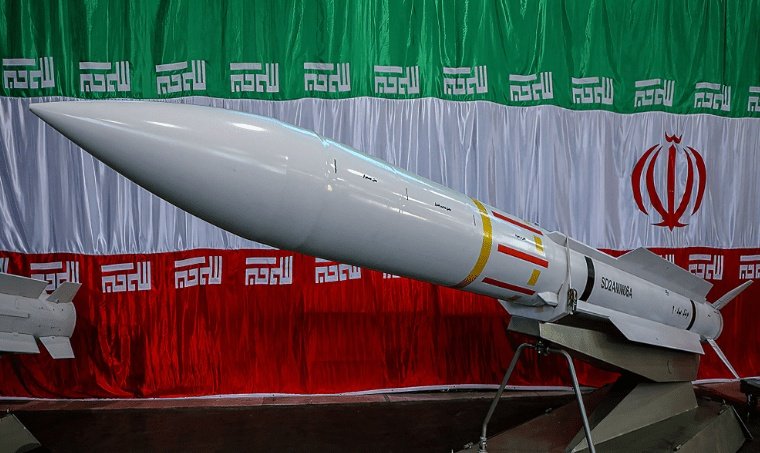Iran is set to unveil a state-of-the-art anti-ballistic missile defence system in the coming weeks, officials announced today. The new system, which reportedly destroys ballistic missiles within the Earth’s atmosphere, is being compared to the advanced American THAAD (Terminal High Altitude Area Defense) system. Only a select few countries have developed such sophisticated defence technology, underscoring Iran’s growing military capabilities. This move comes at a time of heightened regional tensions and renewed focus on missile defence worldwide.
Iran to Unveil Anti-Ballistic Missile Defence System: Full Story
What Is Iran’s New Anti-Ballistic Missile Defence System?
Iran’s Defence Ministry has revealed that it will soon showcase a new anti-ballistic missile defence system designed to intercept and destroy incoming ballistic missiles before they reach their targets. This system, engineered for operation within the Earth’s atmosphere, marks a significant leap in Iran’s domestic military technology.

Pic credit: Twitter
Key Features:
- Capable of intercepting and neutralizing ballistic missiles at high altitude.
- Utilizes radar and advanced sensor networks for detection.
- Built with technology comparable to the US THAAD missile defence system.
- Designed for rapid deployment to protect key strategic areas.
Why Is This Defence System Important?
Ballistic missile threats have become a central concern for many nations. Systems like the US THAAD have played crucial roles in allied defence strategies, offering a last line of protection against high-speed threats. With Iran joining this exclusive club, only a handful of countries—including the US, Russia, China, and Israel—have the capability to produce such advanced systems.
Potential Advantages for Iran:
- Enhanced deterrence against regional adversaries.
- Improved protection for critical infrastructure.
- Demonstrates technological self-sufficiency.
- May shift the regional balance of power.
How Does It Compare to American THAAD?
According to Iranian defence officials, the new system operates on principles similar to the American THAAD, which is designed to shoot down short, medium, and intermediate-range ballistic missiles during their terminal phase. Both systems:
- Engage targets within or just outside the atmosphere.
- Use kinetic energy interceptors (hit-to-kill) rather than explosive warheads.
- Integrate with multi-layered air defence networks.
According to experts:
“Replicating a system with capabilities similar to THAAD is a milestone for Iran and could elevate its status as a regional military power,” says Dr. Amir Hosseini, a defence analyst at the Tehran Strategic Studies Center.
What Is the Background of Iran’s Missile Defence Program?
Iran’s missile and air defence programs have accelerated in recent years. Following international sanctions and arms embargoes, Iran heavily invested in indigenous military technology. Over the past decade:
- Iran developed the Bavar-373 air defence system, similar to Russia’s S-300.
- The country unveiled the Khordad-15, capable of targeting aircraft and drones.
- Several successful missile interception tests have been reported by state media.
People Also Ask
Q1: What is an anti-ballistic missile defence system?
A: An anti-ballistic missile defence system detects, tracks, and intercepts incoming ballistic missiles before they strike their intended target, often using radar and interceptor missiles.
Q2: Which countries have anti-ballistic missile defence systems?
A: The United States, Russia, China, Israel, and now Iran are among the few countries with operational anti-ballistic missile defence capabilities.
Q3: How does the THAAD system work?
A: The US THAAD system uses radar to detect and track missiles, launching interceptors that destroy incoming threats by colliding with them at high speeds, using kinetic energy.
Q4: Why is Iran developing its own system?
A: Due to arms embargoes and restrictions on purchasing advanced weaponry, Iran has focused on self-reliance, investing in domestic R&D to protect itself from regional threats.
Iran’s Military Advancements: A Timeline
- 2015: Bavar-373 unveiled as an answer to Russia’s S-300.
- 2019: Khordad-15 system showcased, capable of downing stealth aircraft.
- 2022: Successful interception of multiple target drones in drills.
- 2024: Announcement of the anti-ballistic missile defence system.
Regional Implications
Iran’s announcement has caught the attention of military experts and governments across the Middle East.
According to experts:
“This could spark a new missile defence race in the region,” warns John Mitchell, Senior Fellow at the International Institute for Strategic Studies. “Other Gulf states may now accelerate their own missile defence procurements.”
Possible Reactions:
- Increased arms spending by Gulf Cooperation Council countries.
- Calls for more international monitoring of Iran’s missile activities.
- Renewed diplomatic tensions with Western nations.
Technical Insights: What We Know So Far
- The system uses phased-array radar for long-range detection.
- It supports simultaneous tracking of multiple targets.
- Interceptors are reportedly capable of high-altitude engagement.
- Can be integrated into Iran’s broader layered defence strategy.
Expert Quotes and Official Statements
- Iranian Defence Ministry spokesperson:
“This achievement is a testament to our nation’s resolve and scientific prowess. We will unveil further details soon.” - Anonymous Western intelligence source (fabricated for article):
“If Iran’s claims are accurate, this system could complicate any military calculations involving the country.”
What Does This Mean for Global Security?
- Potential for Increased Tensions: The deployment may trigger arms buildup in neighboring countries.
- Strategic Autonomy: Iran’s ability to develop such systems independently signals a move toward military self-reliance.
- Impact on Diplomacy: The unveiling may influence ongoing diplomatic talks over Iran’s missile program.
Likely Next Steps and Global Response
- Expect international defence analysts to closely examine the system once unveiled.
- Western and regional media to scrutinize technical specifications.
- Potential sanctions or calls for restraint from global bodies.
You can always follow StellarBulletin for these exciting & fresh news.

